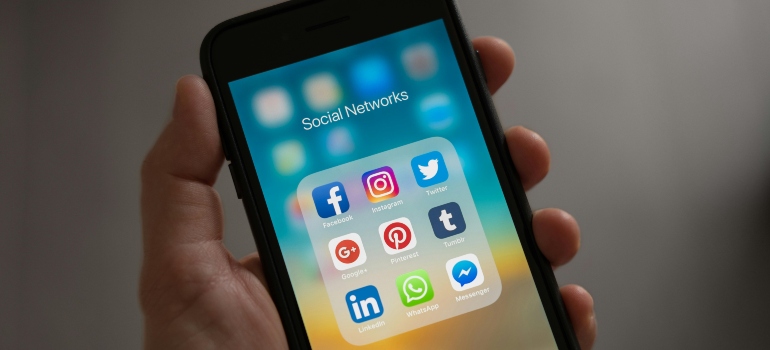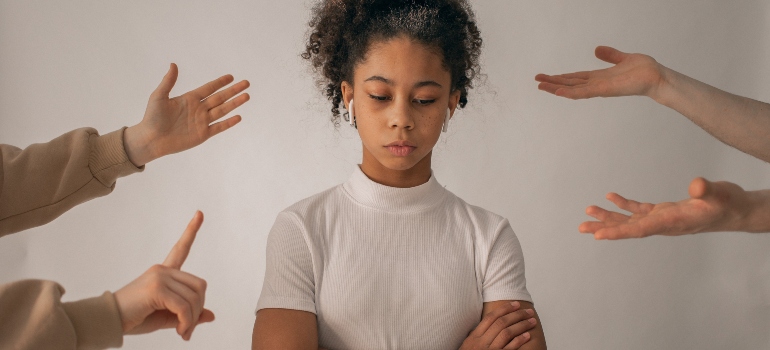How Social Media Influences Substance Abuse among PA Adolescents
There are many ways social media influences substance abuse among PA adolescents and young adults everywhere. It shapes how young people perceive and engage with drugs and alcohol. Social media platforms often glamorize substance use, influencing teens’ attitudes and behaviors. This reality highlights the urgent need for awareness and intervention. Parents and educators play a crucial role in guiding teens through the challenges of social media influence. And if things get too serious, a reliable rehab center in Pennsylvania can provide the necessary help to those affected. It offers a path to recovery and understanding, equipping adolescents with the skills to navigate social pressures. Transitioning from awareness to action involves recognizing signs of substance abuse early. Together, we can address this issue and support our youth in leading substance-free lives.
Jump to Section
A Quick History of Social Media
Social media has come a long way since the early days of the internet. It all started in 1971 with the first email, opening the door to digital communication. In 1978, people were using Bulletin Board Systems (BBS) to share messages and files. The late 1990s brought us Six Degrees, launched in 1997 as one of the very first social media sites where users could make profiles and connect.

The early 2000s were a busy time for social media. LinkedIn came out in 2003, offering a space for professional networking, while Myspace became popular for its customizable profiles and music sharing. Then came Facebook in 2004, changing how we connect, share, and talk with people all over the world. YouTube arrived in 2005, becoming a huge part of how we watch videos and share media.
Twitter started in 2006, introducing us to quick, real-time posts and hashtags that help organize conversations. Instagram, launched in 2010, focused on sharing photos and videos and quickly became a top app worldwide.
More recently, TikTok, launched in 2017, has become the go-to for short, fun videos, leading the way in viral content and creativity. The growth of social media from its beginnings to now shows our ongoing desire for connection, creativity, and community online, keeping it simple and accessible to everyone.
Ways Social Media Influences Substance Abuse among PA Adolescents
Social media plays a big role in how you see and think about using drugs. Websites like Instagram, Facebook, and Snapchat are not just for chatting with friends. They also show how famous people and others use drugs and alcohol, which can make it seem cool or normal.
Teenagers spend a lot of time on social media, and this can make them more likely to try drugs and alcohol. This is because they see their friends and others they look up to doing it, which makes them want to fit in. Also, teens are more likely to give in to peer pressure online, increasing the chances they’ll use substances.
Social media influence is multifaceted and can both positively and negatively affect teens’ views and decisions about using drugs or alcohol. Here are several key ways social media influences substance abuse among PA adolescents:
- Normalization of Substance Use
- Peer Pressure and Social Comparison
- Influencer Impact
- Misinformation and Lack of Education
- Targeted Advertising
- Support and Prevention
- Platform for Expression and Seeking Help
Normalization of Substance Use
Social media often portrays substance use as a normal or glamorous activity without showing the negative consequences. When teens see their peers or influencers consuming alcohol, smoking, or using drugs in posts or stories, they may begin to view these behaviors as acceptable or desirable.
Peer Pressure and Social Comparison
Social media platforms can intensify peer pressure. Teens may see images or videos of their peers using substances and feel pressured to conform to fit in or be accepted. The fear of missing out (FOMO) on seemingly fun experiences can push teens towards experimenting with substances.
Influencer Impact
Influencers on social media who have large followings and appear to lead exciting, rewarding lives can have a profound impact on teens. If these influencers openly use or endorse substances, their followers, including impressionable teens, may be more likely to mimic these behaviors, believing it will lead to similar success or happiness.
When stars like Justin Bieber, Drake, and Cardi B share pictures or videos of themselves using substances, it can influence their young fans to think this behavior is okay.
Misinformation and Lack of Education
Social media can be a source of misinformation about the risks and effects of substance use. Without critical content moderation, misleading information can easily spread, downplaying the dangers associated with drug use or promoting the unproven benefits of substances.
Targeted Advertising
Teens might be exposed to targeted advertising for alcohol, vaping products, or even drug-related paraphernalia on social media platforms. This type of advertising can increase curiosity or interest in substance use.
Given that many teenagers need prescription medication for ADHD, this can be particularly dangerous. While these drugs can help tremendously those who actually need help, their highly addictive nature poses significant risks to those who use them recreationally. That is why prescription medication abuse is not something to joke about.
Support and Prevention
On the positive side, social media also offers resources for education, support, and prevention. There are numerous campaigns, support groups, and informational content aimed at preventing substance abuse among teens. These resources can provide valuable education and help teens make informed decisions.

Platform for Expression and Seeking Help
Social media allows teens to express themselves and share personal stories, including struggles with substance use. It can be a tool for seeking advice, support, and resources for recovery, connecting teens with peers who have similar experiences, or with organizations that offer help.
It is obvious that social media has a lot of power. While it can contribute to the normalization and increased pressure to engage in substance use, it also offers avenues for support, education, and positive influence. It’s crucial for parents, educators, and policymakers to understand these dynamics to mitigate the negative impacts and leverage social media as a tool for positive change in substance use education and prevention.
What Are the Social Effects of Substance Abuse in Adolescence?
Substance abuse during your teenage years can cause a lot of problems that go beyond just health issues. It can affect your emotions and how you get along with others. It could also have a significant impact on your future. For this reason, seeking help from drug and alcohol treatment centers in Pennsylvania is not only wise but also necessary.
When teens use drugs or alcohol, they often face mental health issues like depression and anxiety. This can make you rely more on substances to feel better. You might pull away from friends and family, act out, and lose interest in school or hobbies. Using substances can also lead to more violence, unsafe choices, and bad grades.
Why Social Media Influences Substance Abuse among PA Adolescents
Being a teenager is all about discovering who you are and sometimes pushing the limits. During this time, a lot of teens try out substances like alcohol or drugs, often because their friends are doing it and they want to fit in. It feels like if everyone else is doing it, it must be okay, or it might even make you more popular. This kind of thinking can make the dangers of substance use seem less important.
What your friends and the people around you think about using substances can really change how you see it, too. If it seems like everyone in your group or on social media is okay with drinking or using drugs, you might start to think it’s not a big deal.
Also, some teens might be more likely to try substances if they act on impulse or if they’ve had tough experiences, like being treated badly. These personal issues, along with the pressure from friends or what they see online, make it even harder to stay away from substances.
But there’s good news for those who find themselves struggling with alcohol or drug use. Alcohol rehab centers in Pennsylvania are there to help. These centers understand what you’re going through and have special programs just for you. They look at what’s causing the problem and help you work through it. Going to one of these centers can be a big step toward getting better and living a life without depending on substances.
So, when it comes to using substances, it’s not just about what we do; it’s also about why we do it. Knowing there’s help out there, like the rehab centers, can make a big difference for anyone looking to change.

Social Media Impact on Teen Self-Esteem
Social media platforms are filled with pictures and stories that often only show the best parts of people’s lives. When young people scroll through these posts, they see others having fun, looking great, and seemingly living perfect lives. This can make them feel like they’re not good enough or that their own lives don’t measure up. These feelings of not being good enough, loneliness, or sadness are pretty common among teens.
In trying to deal with these tough emotions, some young people might turn to substances like marijuana or alcohol. They might think that using these substances will make them feel better about themselves or help them fit in with the cool crowd they see online. Essentially, they’re trying to escape their feelings of inadequacy or to mimic the lifestyles they admire on social media, believing it might make them happier or more accepted by their peers.
To help with this problem, we need to educate young people and their parents about the risks of drug use and the importance of being careful about what they see and do online. Places like marijuana rehab centers are an important resource for those who need help with drug use. These centers offer support and treatment to help people understand the dangers of drugs and work toward recovery.
Cyberbullying and Substance Abuse
Social media is like a two-sided coin for young people today. On one hand, it’s a great place to connect and share creative ideas. On the other, it opens the door to cyberbullying, a type of bullying that happens online. This kind of bullying can really hurt your feelings, making you feel anxious, sad, and even bad about yourself.

Cyberbullying is tough because it can happen all the time and reach you anywhere, making young people feel really alone and scared to talk about it because they might be judged or not understood. It can also make some teens turn to substances as a coping mechanism. It’s important to deal with these problems early by learning how to handle online bullying and knowing where to get help.
This is where professional support can make a big difference. A detox center in Pennsylvania that looks at the whole picture can be a great place to start healing. These places aren’t just for dealing with drug or alcohol problems; they also help you learn how to deal with the stress and hurt feelings that come from being bullied online. They get how being picked on can really mess with your head and offer special help that fits just what you need.
In an addiction treatment center, you can start to feel better about your time online and build a better relationship with social media. A detox center can help you feel good about yourself again and find a way to enjoy being online without all the negative stuff.
Can Social Media Make You Addicted?
Yes, it’s possible to get hooked on social media. The constant updates, likes, and comments can keep you coming back for more, making it hard to put your phone down. This addiction can take away from important face-to-face interactions, which are key for learning how to get along with others. Young people might find it tough to have real conversations, understand how others are feeling, or show empathy. This can hold back their emotional and social development.

Spending too much time on social media can mess with your sleep, exercise, and hanging out in person, which can make mental health problems worse.
Smart Strategies for Protecting Kids from Social Media’s Pitfalls
To deal with the bad effects of social media on kids, we need to do several things:
- Keep an eye on how much time teens spend on social media and set some rules.
- Talk openly about the good and bad sides of social media.
- Teach kids how to use social media safely. They should learn how to spot fake news, manage online friendships, and deal with arguments online.
- Encourage kids to have face-to-face chats and to get help if social media makes them feel bad.
- Have regular talks about what they’re doing online and how they feel about it.
- Use privacy settings and adult monitoring to keep them safe online.
What to Do Instead of Scrolling?
If you are looking for fun and healthy ways to spend your time that beats just scrolling on your phone, you’re on the right track! Start with reading. It’s a cool way to dive into different worlds without leaving your couch. Also, try getting artsy with painting, drawing, or any craft. It’s a great mood lifter and lets you express yourself.

Love being outside? Go for a hike or bike ride. It’s awesome for staying active and enjoying nature. Cooking or baking can also be a blast. Whip up some new dishes for a tasty adventure and share them with buddies or family. If you’re into staying fit, think about joining a local sports team or trying out yoga. It’s a fun way to meet people and stay in shape. Giving your time to a cause you care about through volunteering can feel really rewarding. It helps you connect with others and make a difference in your community.
These activities are great for creating awesome experiences and connections, helping you stay clear of too much screen time and drug use. Dive in for a healthier, happier life.
Substance Abuse Among PA Adolescents
In Pennsylvania, the situation with adolescent substance abuse is somewhat better than the national average, though it’s far from ideal. Teenagers in the state are 13.33% less likely to have used drugs in the past month than their counterparts across the United States.
Specifically, 7.22% of Pennsylvanian teens aged 12 to 17 reported drug use in the last month, with a significant majority (84.85%) of these instances involving marijuana. The annual marijuana use rate stands at 11.92% among this age group, while cocaine abuse and methamphetamines were used by 0.44% and 0.22% of teens, respectively.
Heroin abuse among PA teens was reported at a notably lower rate of up to 0.05%, and 1.86% of adolescents disclosed misusing pain relievers. Alcohol consumption in the past month was reported by 9.19% of teens, slightly higher than the national average for their age group by 0.42%. Among young adults aged 18 to 25, 436,000 reported using drugs in the last month, showing a 7.98% lower drug use rate than the national average for their age group. Additionally, 2.84% of teens met the criteria for illicit drug use disorder (IDUD), and 1.64% met the criteria for alcohol use disorder (AUD) in the past year, highlighting the ongoing challenges of substance abuse within this demographic in Pennsylvania.
Substance Abuse Treatment Options for PA Adolescents
For adolescents in Pennsylvania grappling with substance abuse, a spectrum of treatment options and therapeutic approaches is available, each tailored to meet the unique needs of young individuals seeking help. Understanding these options can empower families to make informed decisions toward recovery and wellness.
Addiction Therapy Options
Some of the therapy options for addiction treatment and programs available for teens in PA are:
- Cognitive Behavioral Therapy (CBT): CBT for addiction is a widely used approach that helps teens identify and challenge negative thought patterns and behaviors related to substance use. By focusing on problem-solving, CBT equips adolescents with practical skills to cope with situations that might trigger substance use.
- Dialectical Behavior Therapy (DBT): DBT for addiction is particularly effective for adolescents dealing with emotional dysregulation or mental health issues alongside substance abuse. This therapy emphasizes acceptance and change, teaching coping mechanisms to manage stress, regulate emotions, and improve relationships.
- Dual Diagnosis Treatment: For teens facing both substance abuse and mental health disorders, dual diagnosis programs offer comprehensive care that addresses both aspects simultaneously. These programs ensure that underlying mental health conditions are treated alongside addiction, which is crucial for long-term recovery.
- Music Therapy: Engaging in music therapy allows adolescents to express themselves, explore emotions, and find comfort through music. It can be a powerful tool for emotional healing and self-discovery, often serving as a non-verbal outlet for expression.
- Recreational and Adventure Therapy: These therapies incorporate physical activities and outdoor adventures as part of the treatment process. They aim to boost self-esteem, foster teamwork, and develop problem-solving skills, all while providing a healthy outlet for energy and stress.
- Family Program: Recognizing the crucial role of family in recovery, many treatment centers offer family programs. These programs involve family members in the treatment process, providing education on substance abuse, enhancing communication skills, and rebuilding trust within the family unit.
Addiction Treatment Options in PA
Depending on the level of care necessary, adolescents struggling with substance abuse in Pennsylvania have several alternatives:
- Inpatient Treatment: Inpatient programs provide a structured environment where adolescents can receive round-the-clock care. These programs are ideal for those with severe addiction issues, offering intensive therapy and support within a residential setting.
- Outpatient Treatment: Outpatient services allow teens to live at home while attending treatment sessions. This option is suitable for those with mild to moderate substance use issues, providing flexibility to continue with school or work.
- Partial Hospitalization Program (PHP): PHPs offer a middle ground between inpatient and outpatient care. Adolescents attend treatment during the day for several hours, returning home in the evening. This option is designed for those who require more intensive treatment but don’t need 24-hour supervision.
- Intensive Outpatient Program (IOP): IOPs are more demanding than standard outpatient programs, requiring more frequent sessions each week. These programs are suited for individuals needing structured therapy and support while maintaining their daily routines.
Social Media Influences Substance Abuse among PA Adolescents
Social media influences substance abuse among PA adolescents. It is an undeniable fact. While social media has the power to shape perceptions and behaviors, it’s crucial that we address the negative impacts it can have on young people’s decisions regarding substance use. Remember, support and assistance are always within reach. If you or someone you know is grappling with substance abuse, don’t hesitate to reach out for help. Our dedicated team is here to provide the necessary support and guidance to overcome these challenges. By working together, we can bring about positive change in the lives of Pennsylvania’s youth, fostering a healthier and safer environment for our teens. Your participation and effort can truly transform lives. Let’s commit to taking action today and make a lasting difference.